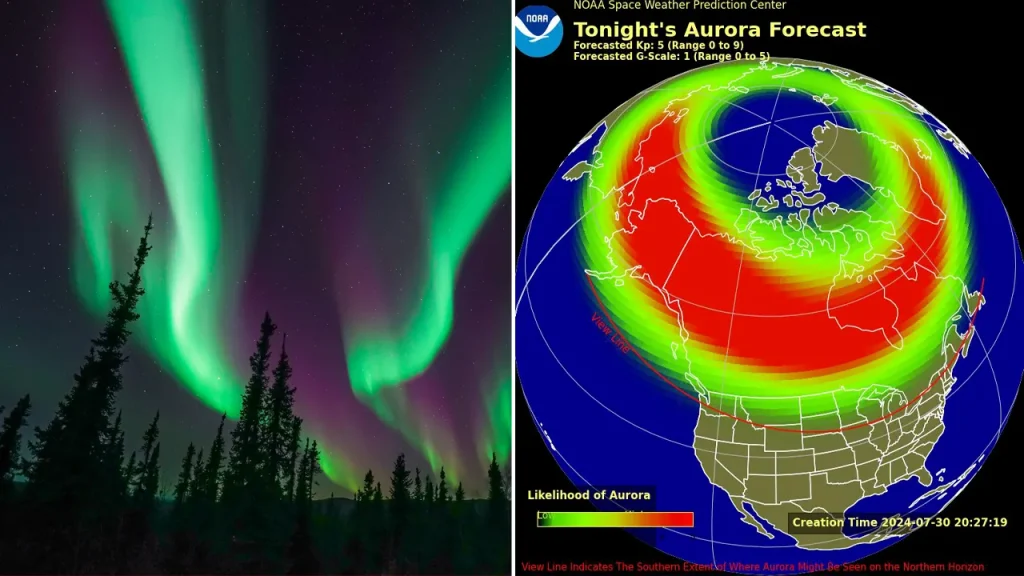Residents of several northern U.S. states may have the opportunity to witness the stunning Northern Lights this week, following a series of recent solar storms. The National Oceanic and Atmospheric Association’s (NOAA) Storm Weather Prediction Center (SWPC) announced that multiple coronal mass ejections (CMEs) released by the Sun are on a path toward Earth. Solar activity was heightened over the weekend, with events such as solar flares and filament eruptions associated with CMEs. Some of the CMEs have Earth-directed components, with possible arrival dates ranging from July 29th onwards. Additional CME arrivals remain a possibility due to the active sunspot groups on the Sun.
A Geomagnetic Storm Watch has been issued and will be in effect until Wednesday, signaling the potential for moderate magnetic storm levels to occur. Earlier this summer, the Aurora Borealis was visible across the U.S., even in some southern states, following the strongest geomagnetic storm in 20 years. While X-class solar flares can lead to high-frequency radio blackouts, the charged particles from CMEs create the mesmerizing display of the Northern Lights. NASA satellites have captured the CMEs moving away from the Sun and towards Earth’s magnetic field, providing a forecast for the visibility of the lights.
The SWPC’s website is continuously monitoring the CMEs, offering forecasts for the evening and following days to map out possible sightlines of the Northern Lights and the states that may be able to witness the spectacle. Predictions point to potential G2 to G3 magnetic storm levels, with the most intense storms likely occurring during daylight hours in the eastern U.S. Other reported CME arrivals have the potential to lead to more sightings throughout the week. G3 sightings indicate that residents in upper U.S. states and parts of the Midwest stand a chance to observe the lights.
The visibility of the Aurora Borealis is also dependent on weather conditions. Most of Canada and the northern U.S. states are expected to have clear skies, offering ideal conditions for viewing the lights. Cities like Minneapolis in Minnesota, Casper in Wyoming, and Buffalo in New York are anticipated to have minimal cloud cover for optimal viewing. Overnight between Tuesday and Wednesday, under strong geomagnetic storm conditions, the Northern Lights may be visible in Chicago, Casper, Iowa, and other locations in the Upper Midwest and Northeast. Cloud cover in these regions may vary, affecting the viewing conditions.
Overall, the recent solar storms and CME activity have heightened the chances of witnessing the breathtaking Northern Lights in northern U.S. states this week. The SWPC continues to monitor the situation and provides forecasts for the visibility of the lights, with potential sightings predicted throughout the week. Residents in the upper U.S. states and some parts of the Midwest may have the opportunity to experience the lights, provided weather conditions are favorable. With the right combination of solar activity and clear skies, stargazers and astronomy enthusiasts are in for a treat as they anticipate the stunning display of the Aurora Borealis.













